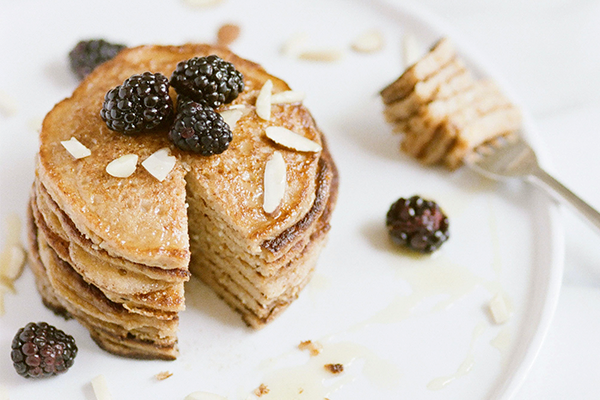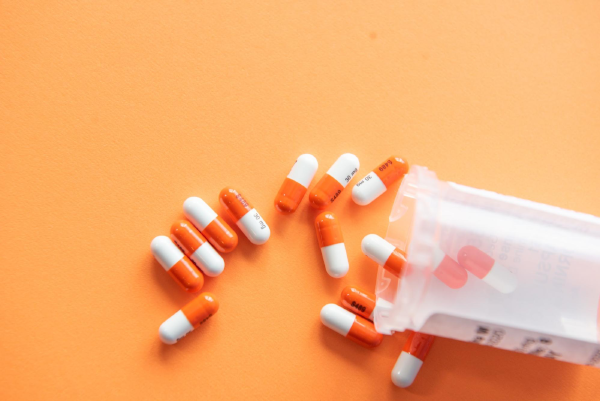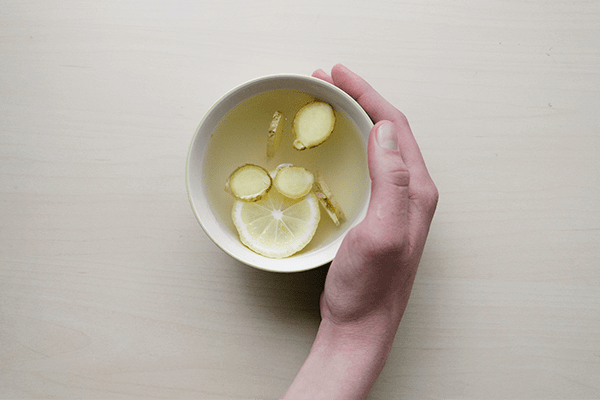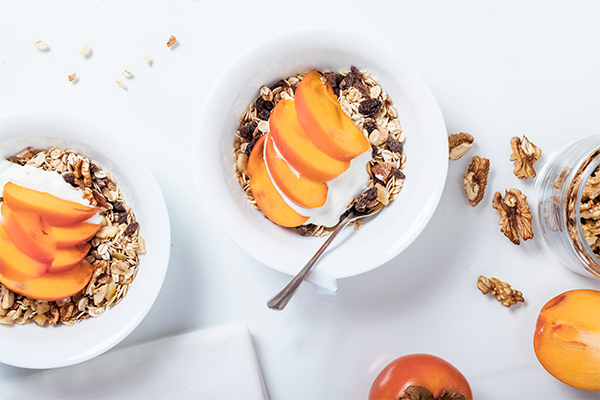- We all have a different starting point of body constitution and baseline diet, so it will take each of us varying amounts of time to detox from sugar. Starting with a 3 day sugar detox is optimal for starting to retrain your palate, while also being manageable.
- Detoxing from sugar involves cutting all added sugar from your diet. Detoxing sugar isn’t only about what you eat — sleep and stress affect hormone levels that directly impact blood sugar levels and sugar cravings.
- While water itself does not flush out sugar, staying hydrated is an important part of a sugar detox because it can help assist the kidneys and colon in eliminating waste, and help manage cravings.
Sugar is everywhere you look. And if you’ve ever tried to cut added sugar from your diet, you know how difficult it is. Even foods you wouldn’t expect, like pasta sauce and bread, often contain added sugars.
The reality is that minimizing sugar intake is vital for our health. It contains no nutrients and consuming too much can lead to weight gain (and prevent weight loss, no matter how hard you try), deplete minerals from your body, stress your liver, negatively impact cardiovascular health, cause sleep problems, and lots more.
To improve your health, why not try a sugar detox?
I gave up added sugar (and sugar substitutes) for an entire year! Never in my life have I had more energy, slept better, or been in better shape! I tend to be a pretty anxious person and I couldn’t believe how calm I was and how much better I was able to manage my stress. I know such an extreme commitment isn’t for everyone, and it certainly isn’t easy, but I encourage everyone to try a short sugar detox — you can do anything for 3 days right?? And you never know, maybe you’ll want to keep going…
How Do You Do A Sugar Detox?
In the simplest terms, a sugar detox cleanses your body of excess sugar. There are different ways to do this, but the most effective one is to quit cold turkey and go completely sugar-free for a few days. Then you can gradually introduce natural, “healthy” sugar (like from fruits), back into your diet.
Why would you want to do this? Because, unfortunately, the negative effects sugar has on your body and mind are countless.
Before we get into the details of detoxing from sugar, let’s go over the different kinds of sugar and how they can affect your health.
What Is Sugar, Exactly?
Sugar comes in many different forms. Four of the most common are:
- Fructose
- Sucrose
- High fructose corn syrup (HFCS)
- Glucose
Fructose is a natural sugar found in fruits and veggies but consuming too much can still be bad for your health. It would be hard to over consume fructose from eating fruits and vegetables alone, but it is often used as an added sugar in processed foods. The only organ in your body that can break down fructose is the liver. It turns fructose into triglycerides (which can damage liver function), free radicals (which can damage cells), and uric acid (which may cause damage to your arteries).[1]
Sucrose is white table sugar. This is the stuff that many Americans sprinkle on cereal and what is added to baked goods, ice cream, and most processed foods. Sucrose is composed of a mixture of glucose and fructose. The glucose gets sent to your bloodstream, causing a spike in blood sugar, while the fructose is sent to your liver to be metabolized.[2]
High fructose corn syrup is made from cornstarch. Like sucrose, it’s about 50% fructose and 50% glucose. There’s debate whether it’s worse for you than sucrose, but there’s yet to be enough evidence to support any conclusion. Regardless, HFCS isn’t healthier than table sugar and certainly isn’t a good substitute.[3]
Glucose is your body’s primary source of energy. You don’t need to consume glucose; by eating the right foods, your body creates glucose for you. Having too much glucose in your system causes your blood sugar (otherwise known as blood glucose) to rise, possibly to unhealthy levels. Having too little in your blood can also be unhealthy.
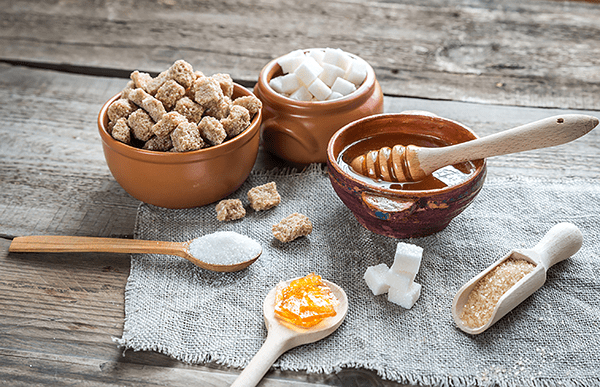
How Much Sugar is Healthy?
According to the World Health Organization (WHO), there’s no nutritional reason to include added sugar in your diet. But if you do, the WHO suggests that a person with a healthy BMI consume no more than 25 grams of sugar per day. That’s 6 teaspoons. [4]
Even if you follow a healthy diet, it’s possible that you’re consuming way more than that.
Our sugar consumption has risen dramatically over the past 200 or so years. In 2005, Westerners consumed, on average, 152 pounds of sugar a year, compared to 6.3 pounds per year in 1822. [5]
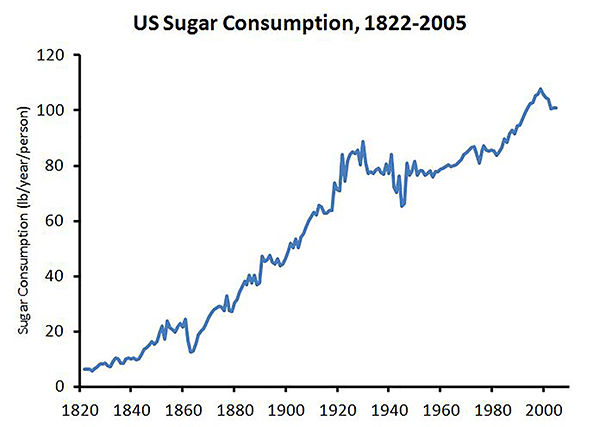
Part of that increase is due to lifestyle. Part is due to the amount of sugar included in basically all processed foods and drinks. And part is because a lot of people don’t know how ubiquitous sugar is. It’s included in products you’d never imagine, like dressings and sauces. One brand of popular pasta sauce has more sugar in one serving than two Oreo cookies!
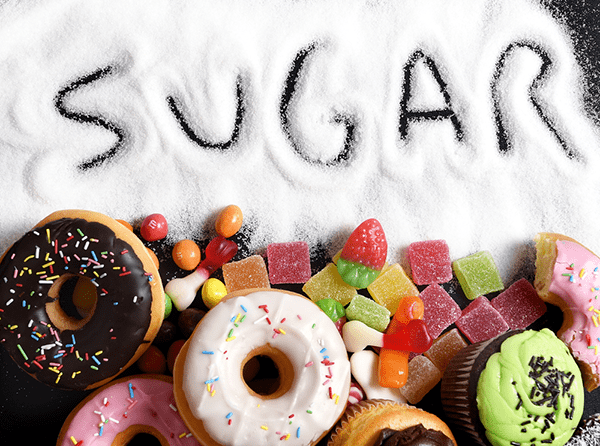
Best Sugar Substitutes
For a sugar detox, and for long-term health benefits, it’s really best that you remove added sugar from your diet completely. This will help get rid of sugar cravings for good. But if you choose to replace some of your sugar intake with sugar substitutes, there are some that are better than others.
The best sugar substitutes are natural sweeteners like stevia, pure maple syrup (in small amounts), dates, and berries.
- Stevia is derived from highly refined stevia leaf extract called rebaudioside A, has no calories and is 200 times sweeter than sugar (so you can use less and get the same sweet taste). [6]
- Fresh dates have high levels of antioxidants, fiber, vitamins, and minerals. There are about 20 calories per date, but this depends on the size of the date. The smaller the date, the fewer the calories. [7]
- If you opt for maple syrup, only pure maple syrup is acceptable. Pure maple syrup contains only natural ingredients, no added sugar, and no artificial color or preservatives. This sweetener contains different vitamins and minerals. It’s especially high in zinc and manganese. However, ⅓ cup of maple sugar contains about 60 grams of sucrose, which is higher than the recommended daily intake. [8]
- Fresh berries, like blueberries and raspberries, have a lower sugar content than other fruit and can be the best option to naturally sweeten foods like oatmeal and cereal, and drinks like water.
The worst sugar substitutes are artificial sweeteners like saccharin (sweet n low), aspartame (equal), and acesulfame K. There is increasing evidence that these non-caloric sweeteners may contribute to an imbalance in the gut microbiome (the “good bacteria” that reside in our digestive system). This is associated with increased glucose intolerance and many chronic health problems like Type 2 Diabetes, obesity, and more.[9][10]
How Sugar Impacts Your Blood Sugar
Blood sugar, also known as blood glucose, is affected by how much sugar you eat.
Seems kind of obvious, right? You eat a lot of sugar, your blood sugar goes up, and when you eat very little or none at all, it goes down. But, it turns out, blood sugar is a bit more complicated than that.
How does blood sugar work?
Blood sugar is the amount of glucose you have in your bloodstream. How does glucose get in there? From the food you eat. When your body digests food, especially carbohydrates, it breaks down the different nutrients and sends them all into the bloodstream. One of those nutrients is glucose.
So, your blood sugar rises when you digest food.
What is high blood sugar?
High blood sugar occurs for a few different reasons.
Cause one is from eating a meal that’s high in carbohydrates. Sugar is a simple carb, which means the body is able to digest it quickly. This causes your blood sugar to spike.
Cause two is stress. When you feel stressed, your body releases glucose that your liver has been storing. If you’re constantly feeling stressed, your body will constantly be releasing glucose and raising your blood sugar.
Cause three is your sleep schedule. Cortisol, a hormone that signals your liver to release glucose into your bloodstream, is activated in the morning, when you wake up. In other words, your morning ritual may be accompanied by a shot of glucose. And getting enough sleep is essential.
When your blood sugar is high, your pancreas releases a hormone called insulin to lower it.
How to stabilize blood sugar
When you eat sugar, it signals your body to release insulin to bring glucose (blood sugar) down to a healthy level. Extra glucose can be stored as glycogen, which is found mainly in your muscles and liver. But when there’s no more room for glycogen, extra glucose is stored as fat.
There are other ways to keep your blood sugar healthy, so you don’t need to use as much insulin, and your glucose doesn’t get turned into fat.
One way is to follow a low sugar diet and reduce the amount of carbohydrates in your food. Ideally you wouldn’t consume any added sugar at all. Stick with the fructose that comes in fruit, and only eat a small amount.
Another way is to eat complex carbs from whole food sources, like whole grains and sweet potatoes. Unlike simple carbs like sugar, complex carbohydrates take longer to digest. Glucose is released over a longer period of time, so your blood sugar doesn’t spike. Complex carbs can also give you more energy for a longer period of time.
Finally, a great way to balance your blood sugar is to lower your stress level. Reducing stress will reduce cortisol, which in turn prevents spikes in blood sugar.
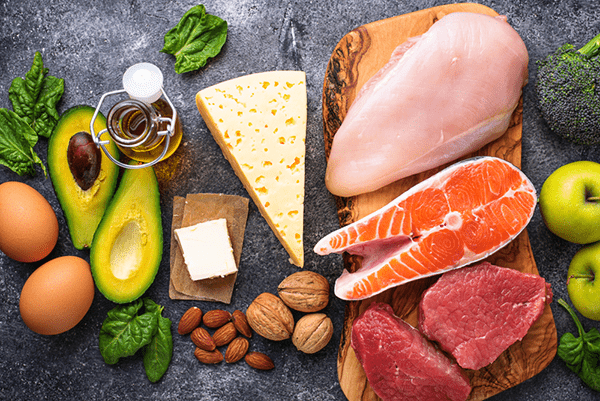
Why Healthy Blood Sugar is Important
When your blood sugar level is constantly high, it can cause a condition called insulin resistance. If your insulin is constantly at work, it can stop being effective. Instead, excess glucose stays in your bloodstream and your blood sugar is constantly elevated (called hyperglycemia). In the meantime, your body keeps releasing more insulin (called hyperinsulinemia), which ends up promoting fat storage instead.
6 Health Benefits of Reducing Sugar Intake
A few health benefits of reducing your sugar intake have been mentioned throughout this article so far, but let’s do a quick round up of those benefits, and add a few more.
- Mindful eating: When you pay attention to which foods have sugar, you will begin to notice other important nutritional facts. This can lead to more informed eating habits.
- Improved dental health: Anyone with a life-long sweet tooth knows how negatively it can impact your teeth! Sugar can create an acidic, cavity-prone mouth.
- Healthy weight management: If your diet consists of a lot of sugar, it will be difficult to lose weight, no matter how hard you try. Reducing sugar can help.
- Improved energy: Highs and lows of a sugar-fueled diet become a thing of the past. Without sugar, your body can sustain a constant energy level throughout the day.
- Healthy blood sugar levels: Having high blood sugar can put you at risk for chronic health problems. Reducing the amount of sugar you consume can help support optimal health.
- Improved focus: Without sugar, you won’t deal with sugar crashes throughout the day, and your mind should be better able to concentrate on tasks.
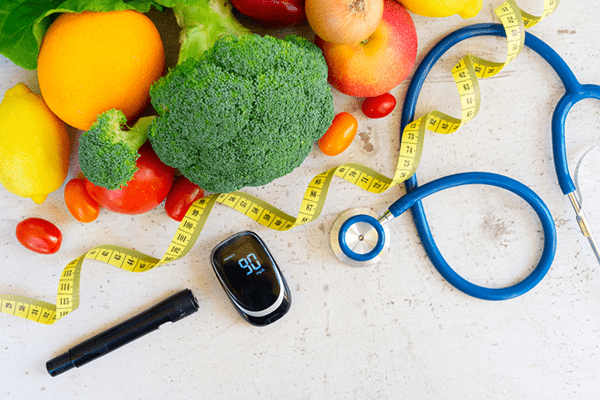
11 Tips to Help You With a Sugar Detox
Flushing your body of sugar can be a challenge, especially if it’s a staple in your diet. The following tips are intended to help you overcome any hurdles you encounter on your sugar detox.
-
Drink water
Although water can’t flush out sugar from your system, drinking lots of it will help you through your sugar detox. When you experience sugar cravings, they can often be satisfied with water. This is because we often mistake dehydration for hunger and then reach for the sweets to satiate our hunger pangs. So stay hydrated to avoid that problem!
-
Get rid of processed and junk foods
Most processed foods contain sugar. Even the foods that seem healthy, like whole wheat sandwich bread and dark chocolate. You could read each individual food label to determine whether the food is worth keeping or throwing out— look for the “added sugar” line on the label— or you could switch completely to unprocessed, whole foods like fresh fruits, vegetables, meats, eggs, nuts, and seeds.
-
Eat a high protein, nutrient-rich breakfast
Protein fills you up and gives you lasting energy. In the morning you’re more likely to crave something sweet, and the most convenient breakfast foods contain sugar. Eggs, protein smoothies, and nuts are all high in protein and will train your body to use protein for energy first thing in the morning.
Lack of sleep, or an inconsistent sleep schedule, can raise your stress hormone, cortisol. Poor sleep habits can also interfere with the hormones that control hunger and satiety, leptin and ghrelin.
If you’ve heard of emotional eating, you’re familiar with the idea that when you’re stressed, you’re more likely to reach for unhealthy foods and eat more often than you need. By reducing your stress level, you’re more easily able to make smarter, healthier food choices.
-
Plan ahead
Know your schedule so you can meal plan and prep sugar-free meals and snacks ahead of time. Plan your breakfasts ahead of time, bring your lunch to work, and look at the menu ahead of time if you’re eating out. All of these things can help you avoid sugary, unhealthy foods.
-
Cut back on other inflammatory foods
This tip has more to do with your blood sugar levels than sugar in your diet. But removing sugar from your diet is one way to reduce inflammation. Other problem foods are gluten and dairy. People often don’t realize that they are sensitive to these foods until they’ve been removed. So, for best results during your sugar detox, limit or eliminate dairy and gluten from your diet, too.
-
Include strength training in your exercise routine
Strength training helps your blood sugar stay at a healthy, steady level. Using your muscles requires more glucose, which lowers the levels of glucose in your bloodstream and helps prevent sugar withdrawal symptoms. With lower blood sugar levels, you won’t have a sugar crash and won’t crave sugar later. On a slightly separate note: exercise releases endorphins, which make you feel good. When you feel good, you’re less inclined to eat emotionally.
-
Eat healthy fat
Despite the belief that fat makes you fat, sugar and flour are the real culprits. Healthy fat is polyunsaturated or monounsaturated. These fats are found in foods like nuts, seeds, avocado, olive oil, pasture-raised meat and eggs, and wild-caught fish.
-
Eat healthy carbohydrates
Carbs are actually essential for our survival. But there’s a difference between the right carbs and wrong carbs. Some healthy carbs toinclude during your detox are brown rice, oats, quinoa, and beans. Even low sugar fruits, like berries, apples, pears, and plums, are good healthy carbohydrates to include in your sugar detox.Avoid starchy, sugary carbs like white and sweet potatoes, corn, beets, and squash during this detox period.
-
Avoid all sugary drinks
Sugar from beverages gets absorbed into your bloodstream almost immediately. That much sugar all at once is too much for your liver to handle, so it gets stored as belly fat instead. Since these drinks don’t fill you up and the energy boost is short lived, you drink another and another. Stick to drinks like unsweetened fresh green juice, unsweetened tea, and water.
Is a sugar detox permanent?
A sugar detox is intended to clear your system of unhealthy sugars so that your body can start to function at its best.
Some people are able to incorporate small amounts of sugar back into their diet without going overboard. Others have a more difficult time doing so. Really, whether or not a sugar detox is permanent can be determined by your dependence on it. Some people are able to regulate their sugar consumption to include fruits and sweets, but others aren’t able to control their cravings when sugar is introduced back into their diet.
Regardless, the less sugar, the better.
How to do a 3 Day Sugar Detox Diet
For anyone who considers sugar a staple of their diet, the first few days without it can feel impossible. You experience side effects like sugar cravings and headaches. You may feel tired and queasy. The easy thing to do is reach for something sugary–and those withdrawal symptoms go away. But that’s only a short-term solution, and an unhealthy one at that.
To get rid of those sugar cravings and begin your journey to a healthier you, a 3 Day Sugar Detox might be just what you need.
A few things to consider when planning your own 3 Day Sugar Detox:
- Breakfast should include about 35 grams of protein to help you feel full throughout the day. [11]
- Include protein in every meal.
- Choose healthy proteins like eggs, poultry, fish, and beans.
- Limit red meat.
- Avoid processed meat like bacon and cold cuts.
- For every meal, include about half a plate’s worth [12] of leafy greens, like:
- Spinach
- Arugula
- Kale
- Collard greens
- Chard
- Include about 44 to 77 grams of healthy fats, like avocado, fresh tuna, salmon, and sardines, flaxseeds, olives, and olive oil, every day.
3 Day Sugar Detox Meal Plan
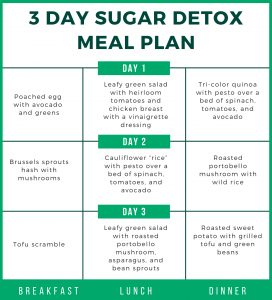
Final Thoughts
So is a 3-Day Sugar Detox Diet Right for You??
Added sugar provides no health benefits and can contribute to high blood sugar and other chronic diseases. If you already deal with low blood sugar or diabetes, you shouldn’t try a sugar detox without discussing the benefits and risks with your doctor.
Otherwise, if you’re wondering if you should try a sugar detox, the answer is yes. You have nothing to lose and everything to gain.
